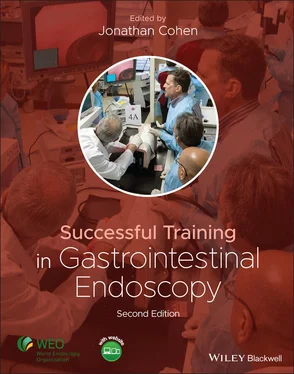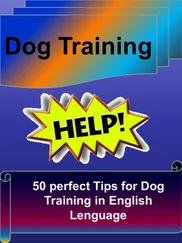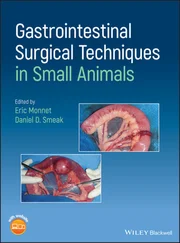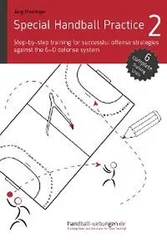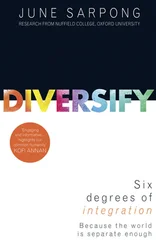Successful Training in Gastrointestinal Endoscopy
Здесь есть возможность читать онлайн «Successful Training in Gastrointestinal Endoscopy» — ознакомительный отрывок электронной книги совершенно бесплатно, а после прочтения отрывка купить полную версию. В некоторых случаях можно слушать аудио, скачать через торрент в формате fb2 и присутствует краткое содержание. Жанр: unrecognised, на английском языке. Описание произведения, (предисловие) а так же отзывы посетителей доступны на портале библиотеки ЛибКат.
- Название:Successful Training in Gastrointestinal Endoscopy
- Автор:
- Жанр:
- Год:неизвестен
- ISBN:нет данных
- Рейтинг книги:3 / 5. Голосов: 1
-
Избранное:Добавить в избранное
- Отзывы:
-
Ваша оценка:
- 60
- 1
- 2
- 3
- 4
- 5
Successful Training in Gastrointestinal Endoscopy: краткое содержание, описание и аннотация
Предлагаем к чтению аннотацию, описание, краткое содержание или предисловие (зависит от того, что написал сам автор книги «Successful Training in Gastrointestinal Endoscopy»). Если вы не нашли необходимую информацию о книге — напишите в комментариях, мы постараемся отыскать её.
Teaches trainee gastroenterologists the endoscopic skills needed to meet the medical training requirements to practice gastroenterology and helps clinical specialists refresh their skills to pass their recertification Successful Training in Gastrointestinal Endoscopy, Second Edition
Successful Training in Gastrointestinal Endoscopy, Second Edition
Successful Training in Gastrointestinal Endoscopy — читать онлайн ознакомительный отрывок
Ниже представлен текст книги, разбитый по страницам. Система сохранения места последней прочитанной страницы, позволяет с удобством читать онлайн бесплатно книгу «Successful Training in Gastrointestinal Endoscopy», без необходимости каждый раз заново искать на чём Вы остановились. Поставьте закладку, и сможете в любой момент перейти на страницу, на которой закончили чтение.
Интервал:
Закладка:
Just as in the Lucero et al. experience described above, training sessions using the Erlanger or EASIE models are labor intensive, with high faculty‐to‐trainee ratios. Moreover, the advance work to organize and staff workshops using this technology is extensive. Since the compact EASIE is relatively portable, its use may allow easier access to animal simulator training at local sites, but this is counterbalanced by the need to have the required expertise to prepare the animal tissues and “load” the models. For this training technique to be applied widely, many expert teachers will still need to be trained; the feasibility of 1 day “train‐the‐trainer” courses has now been demonstrated [38].
On the other hand, like the static models before it, the EASIE model allows trainees to perform multiple repetitions of the same technique. The use of real tissue and the capability of performing advanced therapeutic procedures make this an attractive simulator for practitioners hoping to learn new techniques and for advanced fellows to practice and improve their skills, as well as to acquire new abilities [39].
By devising a way to allow realistic simulation of diagnostic and therapeutic techniques using a model that is portable, Hochberger set in motion a rapid expansion in the use of hands‐on training for GI fellows in the United States and Europe. Workshops at courses such as the annual NYSGE course and at national and regional endoscopy meetings proliferated. Around 2000, under the leadership of Christopher Gostout, the ASGE launched a major initiative to create opportunities for ex vivo model training in a central freestanding location. This effort culminated in the creation of the Integrated Technology and Training (ITT) center of the ASGE, and the development of a standardized first year fellows’ course curriculum, integrating a day of intensive hands‐on work in the ex vivo laboratory with interactive didactic lectures. The ongoing ASGE and industry support for these courses has led to over 300 fellows each year since 2005 attending the ITT workshop in the summer of their first year of fellowship. Through this effort, ex vivo hands‐on training to some degree has become part of the standard endoscopy training for US GI fellows. Efforts to extend such opportunities for advanced endoscopy trainees and to individuals in practice have expanded considerably since the mid 2000s and are addressed in Chapters 37and 38of this book.
Just as important as his role in the development and popularization of the ex vivo model, Hochberger made several other key contributions to the evolution of endoscopy training. Expanding on the course concept of Lucero, he embedded the simulator work into rigorous training programs, which deconstructed instruction according to specific targeted skill sets. Regardless of the endoscopic procedure being taught, each learning station was assigned separate specific learning objectives. Manual hand–eye skills were taught using specially designed coordination exercises. Communication skills between endoscopist and assistant were emphasized. Assessment of skills was broken down by specific procedure steps to ensure that all details received specific attention and instruction. The structure of the workshops he designed in collaboration with his German colleagues and his colleagues from the NYSGE incorporated expert demonstration of proper technique, repetitive practice with sufficient endoscope time per trainee per skill station to do so, self‐assessment, and instructor feedback. These components have remained the essential backbone of all subsequent ex vivo model‐based training. In addition, Hochberger first promoted the concept of “team training,” focusing on the importance of coordinating training among the endoscopist and assisting staff.
Live animal courses
 Both research and training courses have employed endoscopy performed on live anesthetized pigs and dogs [39–42]. Using live animals provides the best possible tactile “feel” of real tissue and endoscope movements with conditions most closely resembling those that occur during human endoscopy. Specifically, this includes the presence of luminal fluid, motility, and the ability to cause real bleeding and perforation (Video 1.5). Such courses have been conducted to teach therapeutic techniques, most notably ERCP and EUS [41]. At present, live animal courses are the only means of nonhuman simulation of sphincter of Oddi manometry [42].
Both research and training courses have employed endoscopy performed on live anesthetized pigs and dogs [39–42]. Using live animals provides the best possible tactile “feel” of real tissue and endoscope movements with conditions most closely resembling those that occur during human endoscopy. Specifically, this includes the presence of luminal fluid, motility, and the ability to cause real bleeding and perforation (Video 1.5). Such courses have been conducted to teach therapeutic techniques, most notably ERCP and EUS [41]. At present, live animal courses are the only means of nonhuman simulation of sphincter of Oddi manometry [42].
Although clearly advantageous for the above reasons, live animal courses also present some substantial drawbacks. Among these are that animals are very expensive to maintain and there are significant ethical considerations in using animals for training. These ethical considerations are magnified by the fact that ex vivo alternatives now exist for teaching most techniques and do not require sacrificing any animals solely for this purpose. In contrast to the multiple uses possible on other simulator types, once certain procedures, such as sphincterotomy, are performed, it is difficult or impossible for others to practice the same techniques on the same animal.
For these and other reasons, training on live animals, while potentially more realistic than on inanimate simulators, appears now to be on the wane in the evolution of endoscopic training techniques. It appears likely that live animal courses will be limited to advanced procedures such as sphincter of Oddi manometry, for which no comparable inanimate model exists, and advanced training in ESD and NOTES ®. For the latter techniques, many of the skill sets would still be best taught in inanimate tissue models, saving the live animal work for later training in which real physiological conditions and the potential for complication management is required. Live animal endoscopy laboratories remain well suited for clinical investigation. Finally, testing of new accessories and development of new techniques on live animals will likely continue, but much of the groundwork for these tests will have been already completed on inanimate simulators.
Computer simulation
Parallel to the introduction and adoption of ex vivo animal tissue models has been the development of increasingly sophisticated computer simulators. The technology has evolved to incorporate two main features, the ability to vary the pathology encountered and refinements of forced feedback or “haptics” to improve the realism of the earlier static models.
A number of investigators have pioneered efforts to produce computer models, which can allow a realistic experience of handling the endoscope, and are also able to incorporate broad exposure to pathologic images [20, 43–53]. Because so many diverse images can be stored, computer simulation offers the best opportunity to expose trainees to a wide range of pathology. Computer‐based learning can take place either independently or as part of larger training courses, and progressive tutorials of increasing difficulty can be constructed. Unlimited repetition and drilling in specific infrequently encountered procedures is possible. Moreover, progress during training can be recorded and opportunities for feedback exist.
Computer simulators typically utilize a “real” endoscope passed into a dummy mannequin. Tactile feedback capability, generated by sensors on the endoscope tip, is a key feature. The experience is enhanced by incorporation of real video images. Moreover, insufflation, suction, and bowel wall motility can be reproduced. An ASGE technology assessment statement on simulators describes in detail the innovative technological developments in this field [43]. The images on the display can be derived from interactive video stored on the computer or external storage devices, computer‐generated images, or a combination of both.
Читать дальшеИнтервал:
Закладка:
Похожие книги на «Successful Training in Gastrointestinal Endoscopy»
Представляем Вашему вниманию похожие книги на «Successful Training in Gastrointestinal Endoscopy» списком для выбора. Мы отобрали схожую по названию и смыслу литературу в надежде предоставить читателям больше вариантов отыскать новые, интересные, ещё непрочитанные произведения.
Обсуждение, отзывы о книге «Successful Training in Gastrointestinal Endoscopy» и просто собственные мнения читателей. Оставьте ваши комментарии, напишите, что Вы думаете о произведении, его смысле или главных героях. Укажите что конкретно понравилось, а что нет, и почему Вы так считаете.
